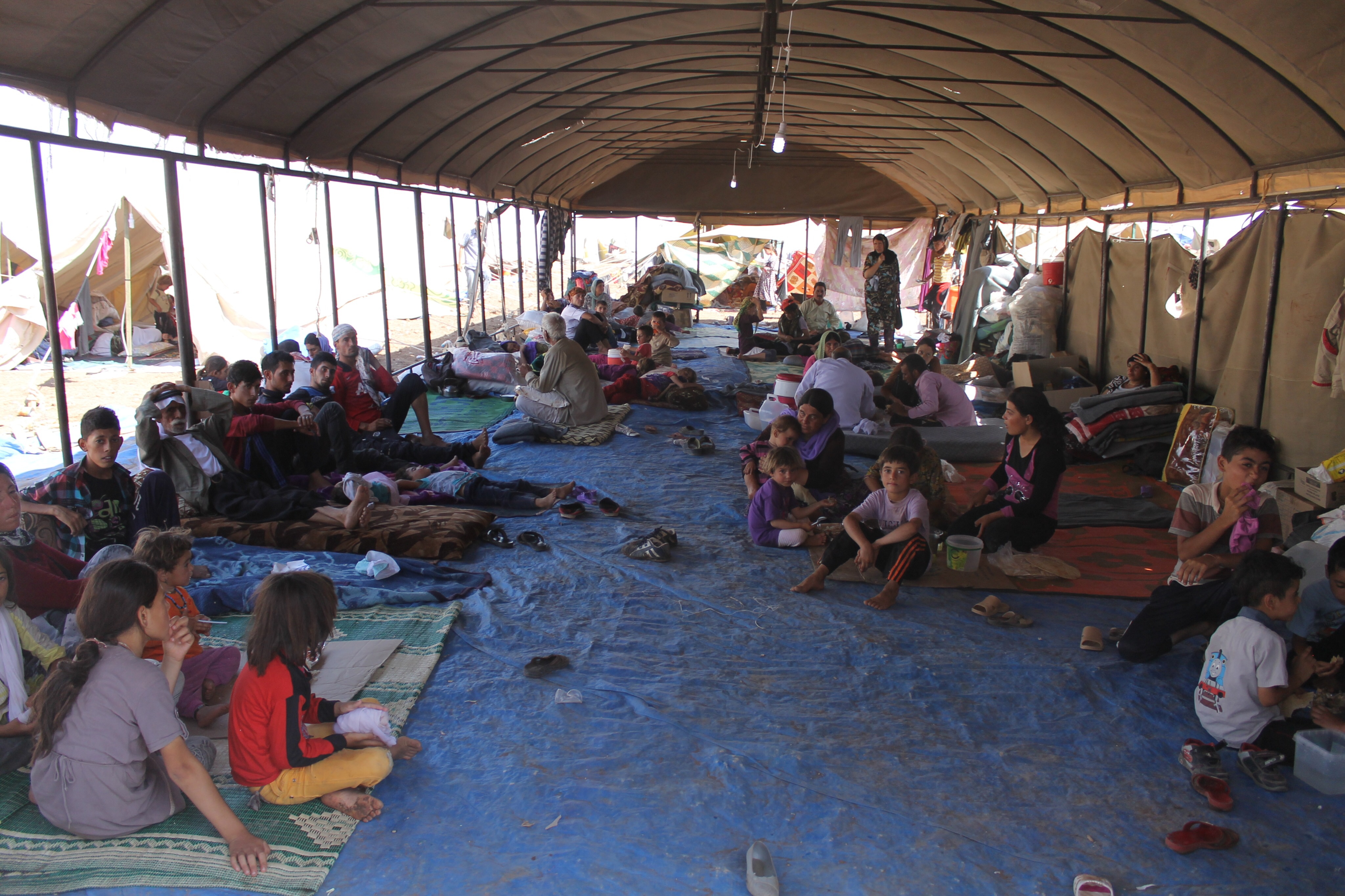In August 2014, the Yazidis re-entered the global 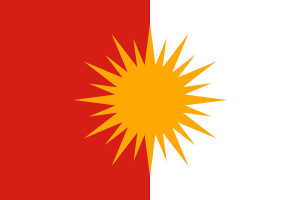 consciousness following an Islamic State-led massacre of over 5,000 men, women, and children, in a repeat of the Saddam-led purges on the tribal people historically condemned for “devil worship”. The Islamic State destroyed a Yazidi shrine in the process, and demanded that the Yazidi convert to their version of Islam and pay a religious tax, or else face execution. In total, between 35,000 and 50,000 Yazidi refugees were driven to Iraq’s Mt. Sinjar by the Islamic State in an effort to starve them to death, spurring a later-abandoned American effort to rescue the refugees. Although the Obama administration did carry out airstrikes on the Islamic State militants targeting the Yazidis, and delivered humanitarian air drops to Yazidi refugees, it has failed to relocate the Yazidi refugees to this day. A further 5,000 to 7,000 women, or 20% of the female Yazidi population, are also currently being kept as sex-slaves, with revenues for the trade of Yazidi women and children directly funding the Islamic State campaign.
consciousness following an Islamic State-led massacre of over 5,000 men, women, and children, in a repeat of the Saddam-led purges on the tribal people historically condemned for “devil worship”. The Islamic State destroyed a Yazidi shrine in the process, and demanded that the Yazidi convert to their version of Islam and pay a religious tax, or else face execution. In total, between 35,000 and 50,000 Yazidi refugees were driven to Iraq’s Mt. Sinjar by the Islamic State in an effort to starve them to death, spurring a later-abandoned American effort to rescue the refugees. Although the Obama administration did carry out airstrikes on the Islamic State militants targeting the Yazidis, and delivered humanitarian air drops to Yazidi refugees, it has failed to relocate the Yazidi refugees to this day. A further 5,000 to 7,000 women, or 20% of the female Yazidi population, are also currently being kept as sex-slaves, with revenues for the trade of Yazidi women and children directly funding the Islamic State campaign.
According to a UNHCR Report released on 25 March 2015, the Islamic State’s persecution of the Yazidis has included abduction, the rape of girls as young as six years old, forced conscription, the destruction of homes and religious shrines, mutilations, and summary executions. However, the Islamic State-led persecution of Yazidis is nothing new. During the 1970s and 1980s, Saddam Hussein “forcefully relocated Yazidis from their traditional home near the Sinjar mountains to cinderblock villages in poorly-resourced areas, gave them Arabic names, and forced them to speak Arabic and not Kurdish”. More recently, “in August 2007, around 500 Yazidis died in coordinated attacks [by Al-Qaeda militants] on villages near Sinjar” in what is considered to be the deadliest attack of the Iraq War. The question then remains, how can the brutal oppression of the Yazidis be justified under a fundamentalist interpretation of Islam? In order to fully comprehend the anti-Yazidi campaign, it is necessary to outline the Yazidi belief system, and the roots of the IS-campaign in the Dabiq prophecy.
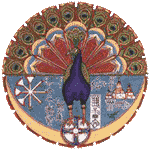
The Yazidis, or Daasin, as they refer to themselves, are an ethno-religious people, most often improperly labelled Kurdish, composed of 70,000 to 500,000 people. Most Yazidis traditionally reside in Aleppo and Jazirah, located in Northeastern Syria. They can be identified by their worship of Yasdan, an ancient Kurdish word for God, and his angels, the greatest of which is Melek Tauk, or the “Peacock Angel”. They believe that they are descended from Adam, but not from Eve, and so consider themselves quite different from the rest of humanity, choosing to keep themselves separate from the people among whom they live.
Considered devil worshipers by the majority Muslim population in the region, the Yazidis believe that Melek Taus, who they also refer to as Iblis, coincidentally one of the Arabic names for Satan, was thrown into hell by Yasdan for 40,000 years. Similar to the Islamic tradition of the fall of Lucifer, Melek Taus was banished for his refusal to bow down to Adam, although the Yazidi version differs in its understanding that eventually Iblis regained favour with Yasdan. After Iblis repented, his tears “quench[ing] the fires of the underworld”, he regained favour with Yasdan and was reinstated as Chief of the Angels. Today, the Yazidis believe that there is no heaven or hell, but rather, all men have the capacity for good and evil.
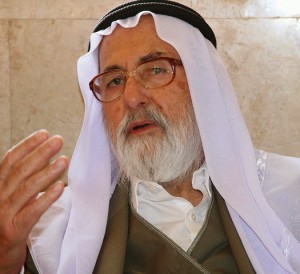
The Yazidis’ syncretic belief system, which predates Christianity by 2,000 years, is also heavily saturated with a number of pre-Islamic pagan beliefs, which would seem quite bizarre to the region’s majority Muslim population. “Like ancient Mithraists, they sacrifice bulls…When they pray they face the sun, like Zoroastrians”. They also refuse “to eat lettuce, pumpkins, and gazelles, [and refuse] to wear dark blue”. The Yazidi community is divided into three castes, the Murids, Sheiks, and Pirs, with members only marrying within their own caste system. Any violation of the social order governed by the caste system is punishable by death. The Yazidis are led by a secular hereditary Emir, Tahseen Said, and a Sheikh, Khurto Hajji Ismail, a dual concept of leadership which the Islamic State also finds offensive.
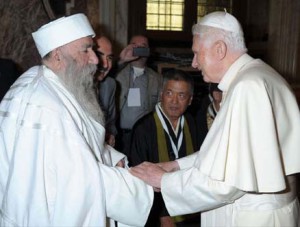
The Dabiq prophecy, which goes back 1300 years, is outlined in an interpretation of the Hadith, the oral teachings of the Prophet Muhammad. According to the Dabiq prophecy, Dabiq, Syria is to be the location of the final Apocalyptic battle, or Malahim, between Muslim and Christian armies, led by Jesus, who Muslims consider to be a prophet of Islam, and the Mahdi, the Islamic messiah in the Sunni and Shi’i traditions, on the side of the Muslims. Leading the infidels will be the Dajaal, the prophesied one-eyed false messiah and anti-Christ. It is in an effort to prepare for this final showdown between good and evil that the Islamic State has fought so hard to secure Dabiq, in the process killing thousands of Yazidis.
It is still a wonder to Westerners and moderates, who cannot understand anything justifying mass extermination, why the Islamic State feels so justified in their genocide of the Yazidis. In fact, the Islamic State has even gone so far as to post images of summary executions of Sinjari Yazidis on their social media accounts, in an effort at fostering an increase in recruitment. Unfortunately, the Dabiq prophecy lends a false legitimacy to the Islamic State-led campaign against the Yazidi populations of Iraq and Syria, making it ever more unlikely that the Yazidi genocide will end any time soon.![]()

